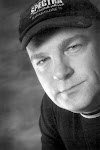Some of my favourite people to work with are teenagers. There curiosity and willingness to try things make photographing them a delight. The images in this post are from a recent lifestyle portrait session that I did at Kates Park in North Vancouver. It was close to sunset, maybe an hour before, when these images where taken. Although they were done at about the same time and same place, two very different techniques were used to capture the images.
The first image was taken in direct sunlight. The subject was turned so that her back was facing the sun. When photographing a portrait in direct sunlight, I work at having the subject between the sun and the camera. This technique gives the beautiful rim light that I have in this portrait and allows me to control the light on the face.
When taking this portrait, the sun was low enough to cause flair in my image that I did not like. to correct this, I moved to be at a slight angle to the sun - correcting the flair problem. A reflector was used to control the light back into the face.
Post production was in Lightroom. To soften the entire image, I used the clarity slider and then added some grain. I also wanted to have a lighter feel to the image so I used the split toning feature to create a look that appeared to be more of a morning light. I have also made some skin tonality adjustments using the luminosity sliders. finally a light vignette was added. I liked the effect so I made it into a Lightroom preset.
The second image was taken about 15 minutes later at a different area of the park. I am facing North East here and the sun is low in the sky - on the other side of the park. As a result, there is sun shining across the water lighting the boat and the opposite shoreline, but the beach we are on is being shaded by the trees.
To get this image, I set my exposure for the background. I wanted to show off the beauty of the setting so I needed to insure that it did not disappear. If I had exposed for the subject, the background would have become very overexposed. By exposing for the background, I put the subject in dark. This gives me the advantage of being able to control the exposure on the subject using Flash. I put two 580 EX 11 flashes in a 40" umbrella and balanced the exposure on the subject to the exposure on the background. The final exposure was F 5.0 @ 1/200th, ISO 200 on a Canon 7D. Lens 10 - 22mm set at 21mm.
Final touches in Lightroom were minor skin tone adjustments and a vignette.
This session was a lot of fun and I know the client had a great time as well. We had a lot of time to try some different things and to just play, and the result were well worth it.






